
The Enchanting Charms of Vieux Lille: Where History Meets Elegance
Explore Vieux Lille: A blend of history, culture, and culinary delights in the heart of Lille. Discover cobblestone streets, Flemish architecture, and vibrant markets.
Vieux Lille, or Old Lille, is a delightful blend of historical charm and modern elegance located in the heart of Lille, France. This picturesque neighbourhood is renowned for its cobblestone streets, Flemish architecture, and vibrant atmosphere that captures the essence of both past and present. As you wander through its narrow alleys, you'll be transported back in time, surrounded by beautifully preserved buildings dating back to the 17th century. Art and culture enthusiasts will find Vieux Lille particularly captivating. The neighbourhood is home to numerous art galleries, museums, and cultural sites, including the famous Hospice Comtesse Museum. This converted medieval hospital offers a fascinating glimpse into the region's history and artistic heritage. Additionally, the stunning Notre-Dame de la Treille Cathedral, with its modern façade and gothic architecture, is a must-visit landmark. Beyond its historical treasures, Vieux Lille boasts a lively culinary scene. The area is dotted with charming cafes, gourmet restaurants, and quaint patisseries, offering a delightful array of French and Flemish delicacies. Whether you're in the mood for a leisurely brunch, a sumptuous dinner, or a quick coffee break, you'll find plenty of options to satisfy your palate. Moreover, the neighbourhood's bustling markets and boutique shops provide ample opportunities for shopping and discovering unique local products.
Local tips in Vieux Lille
- Wear comfortable shoes; the cobblestone streets can be tricky to walk on.
- Visit the Hospice Comtesse Museum early to avoid crowds.
- Explore local patisseries for authentic French pastries.
- Check out the local markets for unique souvenirs and fresh produce.
- Take a guided tour to learn more about the historical significance of the buildings.
The Enchanting Charms of Vieux Lille: Where History Meets Elegance
Vieux Lille, or Old Lille, is a delightful blend of historical charm and modern elegance located in the heart of Lille, France. This picturesque neighbourhood is renowned for its cobblestone streets, Flemish architecture, and vibrant atmosphere that captures the essence of both past and present. As you wander through its narrow alleys, you'll be transported back in time, surrounded by beautifully preserved buildings dating back to the 17th century. Art and culture enthusiasts will find Vieux Lille particularly captivating. The neighbourhood is home to numerous art galleries, museums, and cultural sites, including the famous Hospice Comtesse Museum. This converted medieval hospital offers a fascinating glimpse into the region's history and artistic heritage. Additionally, the stunning Notre-Dame de la Treille Cathedral, with its modern façade and gothic architecture, is a must-visit landmark. Beyond its historical treasures, Vieux Lille boasts a lively culinary scene. The area is dotted with charming cafes, gourmet restaurants, and quaint patisseries, offering a delightful array of French and Flemish delicacies. Whether you're in the mood for a leisurely brunch, a sumptuous dinner, or a quick coffee break, you'll find plenty of options to satisfy your palate. Moreover, the neighbourhood's bustling markets and boutique shops provide ample opportunities for shopping and discovering unique local products.
Iconic landmarks you can’t miss
La Vieille Bourse
Discover La Vieille Bourse: a historical monument in Lille where architecture, culture, and vibrant local markets converge.

Notre-Dame-de-la-Treille Cathedral
Discover the stunning Notre-Dame-de-la-Treille Cathedral, a neo-Gothic masterpiece in Lille, France, blending history, culture, and spirituality.

Grand Place
Experience the captivating beauty and rich history of Grand Place, Lille's iconic historical landmark, in the heart of Northern France.

Le Vieux Lille
Discover the enchanting streets of Le Vieux Lille, where historic charm meets vibrant culture in this stunning French destination.

Porte de Gand
Explore the historical significance and stunning architecture of Porte de Gand, a must-visit monument in the heart of Lille.
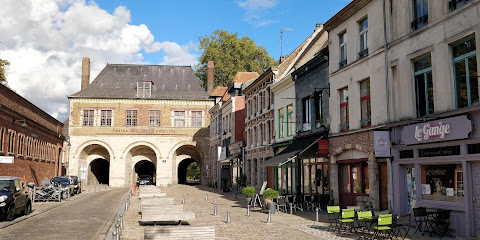
Ilôt Comtesse
Explore the historical elegance of Ilôt Comtesse in Lille, where charming architecture meets vibrant local culture, perfect for an unforgettable visit.

Place des Archives
Explore the historical beauty of Place des Archives, a vibrant square in Lille, perfect for leisurely strolls and cultural experiences.

Place aux oignons
Explore the enchanting Place aux Oignons in Lille, a historical landmark steeped in charm and local culture, perfect for leisurely strolls and photography.

Place Louise de Bettignies
Explore the vibrant atmosphere of Place Louise de Bettignies in Lille, where history meets modern-day charm in a picturesque French square.

Place du Lion d'Or
Explore the historic Place du Lion d'Or in Lille, where stunning architecture meets vibrant local culture for an unforgettable experience.

Essential places to dine
Estaminet Au Vieux De La Vieille
Discover authentic French cuisine in Lille's charming bistro at Estaminet Au Vieux De La Vieille.

Le Barbier qui fume Vieux Lille
Discover authentic French cuisine at Le Barbier qui fume in Vieux Lille; indulge in exquisite cold cuts and fine wines in a charming setting.

Le Broc du Vieux Lille
Experience authentic French cuisine at Le Broc du Vieux Lille – where tradition meets taste in the heart of Lille.

La Petite Table
Discover La Petite Table in Lille - where traditional French cuisine meets modern culinary artistry in an inviting atmosphere.

La Fleur de Lille
Experience authentic French cuisine at La Fleur de Lille - a family-friendly bistro offering delightful dishes made with fresh ingredients.

Le Lion Bossu
Experience exquisite French fine dining at Le Lion Bossu in Lille – where culinary artistry meets tradition.

L'Orange Bleue...Restaurant
Experience authentic French cuisine at L'Orange Bleue in Lille—where traditional flavors meet modern culinary artistry.

L'Assiette du Marché
Discover L'Assiette du Marché: A Culinary Delight in Lille Offering Authentic French Cuisine with Local Flavors.

N'Autre Monde
Experience exquisite French cuisine at N'Autre Monde in Lille - where tradition meets innovation in every dish.

Table N9uf - Restaurant Vieux Lille
Discover authentic French country cuisine at Table N9uf in Vieux Lille - a family-friendly restaurant offering delightful meals in a charming atmosphere.

Markets, malls and hidden boutiques
Louis Vuitton
Discover the elegance and luxury of Louis Vuitton in Lille, offering exquisite leather goods and fashion accessories in a stunning shopping environment.

Souvenirs Lille - Grand Place
Explore Souvenirs Lille - Grand Place for unique local crafts and gifts, capturing the spirit of Lille in every item.

Cigoire - Boutique de cadeaux Lille
Discover unique gifts and local treasures at Cigoire, Lille's charming boutique gift shop offering an array of fashion and home goods.

Solange, Marguerite Et Les Autres Concept Store Lille
Discover a unique blend of fashion and flavor at Solange, Marguerite Et Les Autres Concept Store in Lille - a must-visit for style and taste enthusiasts.
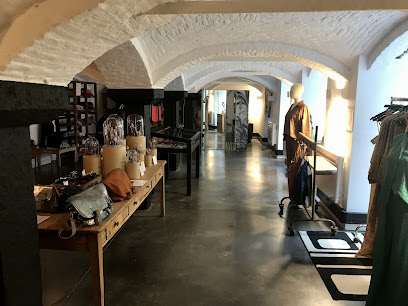
Champ Libre
Explore Champ Libre, Lille's charming gift shop offering unique fashion accessories and stylish men's clothing in a delightful setting.
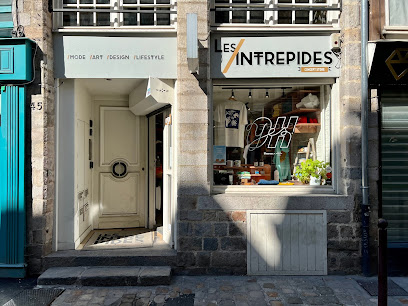
Lampe Berger Store
Experience the art of home fragrance at Lampe Berger Store in Lille, offering exquisite lamps and scents that elevate any space.

Muse
Explore Muse in Lille for exquisite women's clothing, unique costume jewelry, and stylish accessories that define contemporary French fashion.

el MARKET
Explore the vibrant gift shop, el MARKET, in Lille for unique souvenirs and local crafts that embody the charm of your travels.
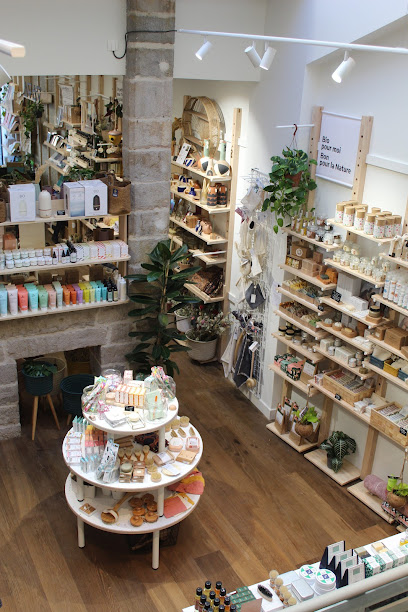
Supreme Store www.supremestore.fr
Discover trendy apparel for men and women at Lille's Supreme Store, a fashion hub that brings style and quality together.
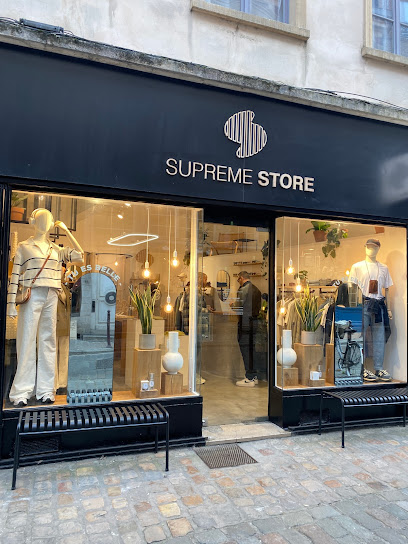
HIGH Shop
Explore HIGH Shop in Lille for an exquisite selection of women's fashion blending style, quality, and local flair.

Essential bars & hidden hideouts
Quai Des Bananas
Experience the vibrant nightlife of Lille at Quai Des Bananas, where innovative cocktails and a lively atmosphere await you.

Le Lobby
Experience the vibrant nightlife at Le Lobby, a cozy pub in Lille offering a diverse drink selection and a welcoming atmosphere.

Joker Cocktails & Bar
Experience innovative cocktails and vibrant nightlife at Joker Cocktails & Bar in Lille, a must-visit destination for every cocktail lover.

Au Boudin Bar
Experience the perfect blend of Italian cuisine and local beers at Au Boudin Bar, a vibrant hotspot in Lille's lively dining scene.

Le Bar Parallèle & Falafel
Discover Le Bar Parallèle & Falafel in Lille, where vibrant bar culture meets authentic falafel cuisine for an unforgettable dining experience.

Le Kremlin
Experience the vibrant nightlife of Lille at Le Kremlin, a lively bar offering a superb selection of drinks and an unforgettable atmosphere.

Little Havana
Experience the vibrant spirit of Little Havana, Lille's premier cocktail bar, where flavor and fun come together in a tropical escape.

L'Illustration
Experience the vibrant nightlife of Lille at L'Illustration, where expertly crafted cocktails and a lively atmosphere await you.

Le Braz
Discover the charm of Le Braz, Lille's top wine bar, where exquisite selections and a cozy atmosphere await wine lovers and casual drinkers alike.

Vintage bar
Discover Le Vintage Bar in Lille, a cozy haven for tourists, offering a delightful selection of drinks and a charming ambiance.

Local Phrases
-
- HelloBonjour
[bon-zhoor] - GoodbyeAu revoir
[oh ruh-vwahr] - YesOui
[wee] - NoNon
[nohn] - Please/You're welcomeS'il vous plaît / De rien
[seel voo pleh / duh ryen] - Thank youMerci
[mehr-see] - Excuse me/SorryExcusez-moi / Désolé
[ehk-skew-zay mwa / day-zoh-lay] - How are you?Comment ça va?
[koh-mon sah vah] - Fine. And you?Bien. Et vous?
[byen. ay voo] - Do you speak English?Parlez-vous anglais?
[par-lay voo ahn-glay] - I don't understandJe ne comprends pas
[zhuh nuh kohm-prahnd pah]
- HelloBonjour
-
- I'd like to see the menu, pleaseJe voudrais voir la carte, s'il vous plaît
[zhuh voo-dray vwahr lah kart, seel voo pleh] - I don't eat meatJe ne mange pas de viande
[zhuh nuh mahnj pah duh vee-ahnd] - Cheers!Santé!
[sahn-tay] - I would like to pay, pleaseJe voudrais payer, s'il vous plaît
[zhuh voo-dray pay-yay, seel voo pleh]
- I'd like to see the menu, pleaseJe voudrais voir la carte, s'il vous plaît
-
- Help!Au secours!
[oh suh-koor] - Go away!Allez-vous-en!
[al-ay voo zahn] - Call the Police!Appelez la police!
[ah-pay-lay lah poh-leece] - Call a doctor!Appelez un médecin!
[ah-pay-lay uh may-duh-sahn] - I'm lostJe suis perdu
[zhuh swee pair-doo] - I'm illJe suis malade
[zhuh swee mah-lahd]
- Help!Au secours!
-
- I'd like to buy...Je voudrais acheter...
[zhuh voo-dray za-shtay...] - I'm just lookingJe regarde juste
[zhuh ruh-gahrd zhoost] - How much is it?Combien ça coûte?
[kohm-byen sah koot] - That's too expensiveC'est trop cher
[say troh sher] - Can you lower the price?Pouvez-vous baisser le prix?
[poo-veh voo beh-say luh pree]
- I'd like to buy...Je voudrais acheter...
-
- What time is it?Quelle heure est-il?
[kehl uhr ay-teel] - It's one o'clockIl est une heure
[eel ay oon uhr] - Half past (10)Dix heures et demie
[dees uhr ay duh-mee] - MorningMatin
[mah-tuhn] - AfternoonAprès-midi
[ah-pray mee-dee] - EveningSoir
[swahr] - YesterdayHier
[yehr] - TodayAujourd'hui
[oh-zhoor-dwee] - TomorrowDemain
[duh-mahn] - 1Un
[uhn] - 2Deux
[duh] - 3Trois
[twah] - 4Quatre
[kat] - 5Cinq
[sank] - 6Six
[sees] - 7Sept
[seht] - 8Huit
[weet] - 9Neuf
[nuhf] - 10Dix
[dees]
- What time is it?Quelle heure est-il?
-
- Where's a/the...?Où se trouve...?
[oo suh troov] - What's the address?Quelle est l'adresse?
[kehl ay la-dress] - Can you show me (on the map)?Pouvez-vous me montrer (sur la carte)?
[poo-veh voo muh mohn-tray (sir lah kart)] - When's the next (bus)?Quand est le prochain (bus)?
[kahnd ay luh proh-shang (bus)] - A ticket (to ....)Un billet (pour ...)
[uhn bee-yay (poor)]
- Where's a/the...?Où se trouve...?
History of Vieux Lille
-
Vieux Lille, the old town of Lille, has its origins in the 11th century when it was established as a fortified settlement. The location, strategically positioned along the Deûle River, facilitated trade and defense. Its name, 'Lille,' is derived from the Old Dutch word 'lille,' meaning 'island,' reflecting its geographical characteristics.
-
During the Middle Ages, particularly in the 14th and 15th centuries, Vieux Lille became a hub for the flourishing cloth trade. The city’s wealth during this period attracted artisans and merchants, leading to the construction of many of the town's Gothic and Renaissance buildings, including the iconic Vieille Bourse, completed in 1653.
-
In the 17th century, Lille came under Spanish control, which led to significant fortifications being erected around Vieux Lille. The Treaty of the Pyrenees in 1659 transferred Lille to French rule. This shift brought a blend of Spanish and French architectural influences, visible in the baroque-style buildings that dot the neighborhood.
-
The 19th century saw rapid industrialization in Lille, affecting Vieux Lille as well. While the neighborhood retained its historical charm, the surrounding areas expanded rapidly with factories and working-class housing. This period marked a transformation in Lille’s economy, as it became a center for textiles and manufacturing.
-
Lille was significantly impacted during World War I, leading to extensive damage in many areas, including Vieux Lille. Post-war reconstruction efforts prioritized restoring the historic heart of the city, and many of the original buildings were meticulously repaired, preserving the neighborhood's architectural heritage.
-
In recent decades, Vieux Lille has undergone a cultural renaissance. The neighborhood is now a vibrant mix of history and modernity, featuring art galleries, boutiques, and cafés. The preservation of its historical buildings alongside new developments reflects Lille's commitment to maintaining its rich heritage while embracing contemporary culture.
Vieux Lille Essentials
-
Vieux Lille is easily accessible from other neighborhoods in Lille. If you are arriving by train, the Lille Flandres and Lille Europe stations are just a short walk away. From the station, you can take tram line 1 towards 'CHU - Eurasanté' and get off at 'Rihour' or 'Lille Grand Palais', which are both close to Vieux Lille. Alternatively, local buses (lines 10, 12, and 13) serve the area. For those driving, parking is available in nearby lots, but be aware that Vieux Lille has narrow streets where parking can be limited.
-
Vieux Lille is best explored on foot due to its picturesque cobbled streets and rich architectural heritage. Public transport options include trams and buses, with stops conveniently located throughout the neighborhood. For a more local experience, consider renting a bicycle through the city’s bike-sharing scheme, V'Lille, which offers numerous docking stations within and around Vieux Lille.
-
Vieux Lille is generally safe for tourists, but standard precautions should be taken. Avoid poorly lit streets at night and keep an eye on your belongings, especially in crowded areas. While there are no specific high-crime areas targeting tourists, petty theft can occur, particularly around busy squares like Place du Général de Gaulle. Always be vigilant and aware of your surroundings.
-
In case of emergency, dial 112 for immediate assistance in France. The nearest hospital is Centre Hospitalier Régional Universitaire de Lille, which is equipped to handle medical emergencies. For non-urgent issues, local pharmacies can provide over-the-counter medications. It is advisable to have travel insurance that covers medical emergencies.
-
Fashion: Do dress stylishly as Lille is known for its fashion. Avoid overly casual attire when dining out. Religion: Do respect local customs, especially when visiting churches; women should cover their shoulders. Public Transport: Do validate your ticket before boarding and give up your seat for those in need. Don’t eat or drink on public transport. Greetings: Do greet with a polite 'Bonjour' and a smile. Eating & Drinking: Do try local specialties like 'Welsh' and 'Moules-Frites'. Don’t rush through meals; dining is a leisurely affair.
-
To experience Vieux Lille like a local, visit the market at Place du Concert on weekends for fresh produce and local delicacies. Take time to explore the hidden courtyards and small boutiques away from the main tourist routes. Engage with locals at cafés and ask for recommendations; they are often happy to share their favorite spots. Don’t miss the chance to try a 'Ch'ti' beer at local brasseries, and consider joining a guided walking tour to learn more about the area's rich history.
Nearby Cities to Vieux Lille
-
Things To Do in Tournai
-
Things To Do in Kortrijk
-
Things To Do in Ypres
-
Things To Do in Nieuwpoort
-
Things To Do in Ostend-Bruges International Airport
-
Things To Do in Bruges
-
Things To Do in Ghent
-
Things To Do in Ostend
-
Things To Do in Mons
-
Things To Do in De Haan
-
Things To Do in Blankenberge
-
Things To Do in Zeebrugge
-
Things To Do in Aalst
-
Things To Do in Knokke-Heist
-
Things To Do in Brussels











